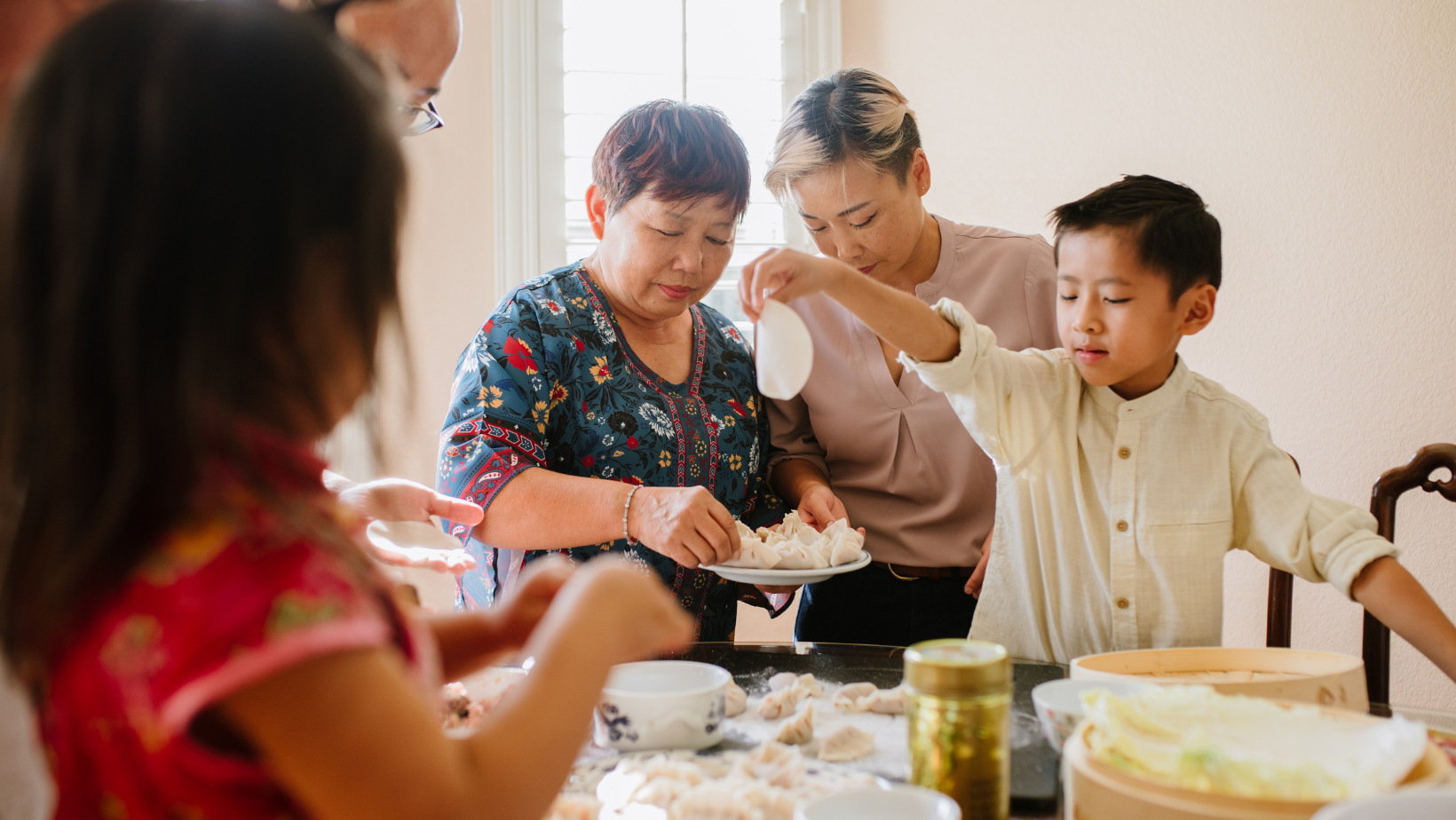It is becoming more common for families to share homes with relatives — particularly for elderly parents to live with their adult children. Some families are even buying larger lots or bigger homes that can provide independent living space for aging parents. In fact, approximately 20% of Americans live in a household with at least 2 generations.
This trend is due, in large part, to the loss of independence and declining health that we all experience as we age. However, there are many other reasons behind Americans living in a multigenerational household. Let’s explore some of the benefits of multigenerational housing.
Types of Multigenerational Households
A multigenerational household can come in many different shapes and sizes. Here are some of the common types of households.
- 3 Generations: The most common multigenerational living arrangement includes 3 generations of people living together, including grandchildren, adult children, and grandparents. Adult children in this scenario are referred to as the “sandwich generation.”
- 2 Adult Generations: A 2-generation household could include young adults living with their parents as well as older parents who move in with their adult children.
- Grandfamilies: Less common multi-generational households include grandfamilies, or grandparents living with grandchildren.
When living together in a multi-generational setting, families may all live under one roof, or there may be a separate living environment on the property for seniors. Think: mother-in-law suite. Whatever the arrangement, this living situation can greatly benefit all involved.
Benefits of Multigenerational Homes
1. Ease Financial Burden
With the rising cost of homes and basic goods, seniors on a fixed income may struggle to make ends meet. Moving in with family members can help save costs for both the senior and their adult children. Everyone can pitch in on groceries, bills, and other finances. Plus, seniors can avoid the heavy price of moving into an assisted living facility or nursing home.
However, finances can be a large cause of dispute as well. That’s why it’s important for family members to be upfront about their finances and work together to clearly define financial responsibilities.
2. Share Responsibilities
When living together, multiple generations can share responsibilities so that the load is lighter for everyone. For example, grandma might enjoy cooking family dinner, her son can do the grocery shopping, and the grandkids can set the table. With more individuals in the home, there are more helping hands to pitch in and get things done.
However, if a senior requires a lot of attention and care, having an aging loved one at home can increase the responsibility on the family. But the responsibilities can be more easily managed with the loved one close at hand rather than across the country or even across town.
3. Dispel Loneliness
Many seniors face loneliness and isolation in their later years. But households filled with adults, children, and grandchildren can help surround seniors with those they love. A multigenerational living arrangement can dispel depression, loneliness, and fear because there is always someone around.
And not only do seniors avoid loneliness, but so do children and grandchildren. Some seniors can help out by watching the kids every now and then, potentially cutting down on child care costs. This can give parents peace of mind knowing that someone is at the house after school or when running errands, and their kids won’t have to be alone.
RELATED CONTENT: Unexpected Causes of Senior Isolation
4. Assist in an Emergency
You never know when an accident will happen or a new health diagnosis will change a senior’s life. Multigenerational family living allows family members to be close to an aging senior and attend to their needs — physically and emotionally. If there is ever an emergency, a family can react quickly to achieve the best health outcomes. Additionally, adult children can keep an eye on their parents and watch for changes in health, monitor medication, and provide assistance when needed.
5. Develop Deeper Relationships
The nice thing about living with family is that you get to spend time with each other and build relationships. Seniors can connect with grandchildren and even their own children on different levels than they would otherwise be able to. Seniors can bring a new perspective to conversations, share treasured wisdom, pass on traditions, and instill virtues in younger generations. And this interaction can help aging loved ones regain a sense of purpose and self-worth.
Being able to spend quality time with loved ones is a major driving force behind multigenerational homes as seniors reevaluate their priorities. Often, seniors follow their grown children and grandchildren so they can watch them grow up and be a part of their growth and development.
RELATED CONTENT: 21 Activities for Seniors and Their Grandkids
6. Manage Health Conditions
Approximately 85% of older adults have at least one chronic health condition. However, some seniors may not be able to manage their conditions on their own as they get older. As prescriptions pile up, it can be hard to remember what to take and when. Remembering appointments to different specialists can become difficult.
Family members can help seniors take control of their health through medication management, attending doctor’s appointments, and coordinating care with healthcare professionals.
7. Assist with Technology
As technology continues to evolve, seniors can often feel left behind. New phones or smart appliances can be intimidating instead of intuitive. Luckily, multigenerational homes can help seniors bridge the technology gap as their adult children and younger grandchildren quickly adapt to and learn new technology. Younger family members can teach seniors how to use various devices and help their loved ones when they get stuck.
If Multigenerational Living Isn’t Possible
It may not always be possible for an aging senior to move in with their family members. In these cases, know that help is still available. Caring Senior Service provides in-home care to seniors who need assistance — no matter when and where they need care. And our professional caregivers can keep loved ones informed and involved in care even if they can’t be nearby. Reach out to your local Caring team to learn more.


